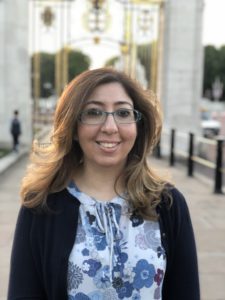Flipping the Class Buys Time
The CAS Writing Program has been amplifying the teaching of core elements of its English as a Second Language (ESL) Academic Writing curriculum by designing and creating Flipped Learning Modules (FLMs) for its international students. With the guidance of the former Center for Teaching & Learning (CTL), funding from its Faculty Fellows program, and technology support from Educational Technology, former senior lecturer and former CTL Assistant Director, Pary Fassihi created online instructional videos with built-in assessments and learning exercises for students to complete at home, and therefore, was able to reorganize class time for more interactive writing workshops and hands-on activities.
Given the success and positive response from her students, she proposed this approach turns into a larger ESL and CAS Writing Program initiative. Through a generous multi-year grant, Pary Fassihi and Maria Zlateva, former Director of ESL, began the ‘Flip to Engage’ project, which has now had more than twenty five collaborators from the faculty of the writing program who have designed, created and video-taped modules. The project has since evolved and expanded to the non-ESL writing courses as well. The program currently has more than thirty modules with more in the works. See here for a list of the CAS Writing Program Modules.
Pary Fassihi, former lecturer in the College of Arts & Sciences Writing Program, revolutionized her classes with the help of educational technology. For her English as a Second Language (ESL) course in academic writing, Fassihi faced two problems: time constraints, and students asking questions that she had already addressed in lecture.
Fassihi received a fellowship from the Center for Teaching & Learning to rethink the way she approached the class and, ultimately, to recreate the entire course as a series of homework and class instructional assignments that mixed video with assessments and exercises, as well as in-class assessments and online feedback sessions. Over the course of a summer, she revamped all of the materials and her classroom lecture plans. When the new class began in the fall, she was ready to roll.
“Flipping a class involves reversing the roles of homework and lecture,” she explained, “to enable students to absorb new content outside of class.” When students arrive in class the teacher, Fassihi does a quick recap, does a quick comprehension check using Turning Point clickers (audience response systems), to ensure that students participated in the module and that the module effectively conveyed the content. This transforms class time from a “mad dash” through explanations of content to an active learning session, wherein the instructor can clarify confusing concepts and run activities that further cement the material in the students’ minds.
“Flipping a class involves reversing the roles of homework and lecture to enable students to absorb new content outside of class.“
Comprehension checks can take a huge variety of forms, but one popular option is clickers. Clickers are operated using TurningPoint software, and allow a teacher to ask a multiple-choice question in PowerPoint and immediately receive every student’s anonymous, silent response. If a particular line of questioning yields a higher number of wrong answers, an instructor will know that they might need to clarify the related topic. Fassihi used clickers in addition to other class activities, like having students fix grammar errors. She found that students were much better equipped to tackle the content when they learned from video modules, rather than standard lecture, and she could spend her class time emphasizing confusing content areas.
Fassihi needed to prepare modules, so she got the help of Educational Technology to learn how to create her own short videos (of three to four minutes each) using Camtasia software on her own laptop, and how to upload them to BU’s learning management system, Blackboard. Camtasia is a software program that records a computer screen, or a portion of a screen, and records audio narration (which can be recorded simultaneously or added in later). Many professors also use Echo360 for this task.
Fassihi entirely restructured her classes over the course of the summer, but she did not stop there. She began to run workshops in a computer lab, where she could check in on each student during their work time and provide individual guidance. Additionally, she adapted her methods for grading students’ papers. Instead of reading and annotating essays she used a screen capture tool to record herself as she went through the essays and provided verbal feedback. Students received a three to four minute video of corrections, in which they could watch Fassihi’s screen as she read through the essay, offering constructive criticism. This technique saved both her and the students valuable time. It improves on written annotations on a paper, because the teacher’s verbal corrections can be elaborated on more easily than written ones. Students leave with more information and need to spend less time asking for explanations of corrections.
Fassihi believes that flipping a classroom can make both faculty and students more satisfied with their experiences in the classroom learning environment, because class time becomes more active and targeted toward students’ specific needs. While Fassihi’s efforts required time and dedication, she notes that they can be accomplished despite a busy schedule or discomfort with technology. She credits the former Center for Teaching & Learning and the Educational Technology Department with their ready help for such efforts. Ultimately, she says, professors who flip their classrooms find themselves with an entire course of lectures saved online to use over and over, reducing future lecture preparation time, and gives students an additional set of resources to go over when they hit a roadblock.
Technology Support
The Educational Technology team provides training in this area. Visit BU TechWeb for training information or schedule a consultation, email askedtech@bu.edu.
